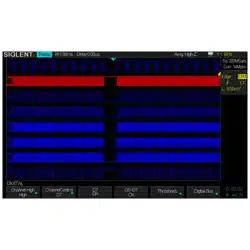Loading ...
Loading ...
Loading ...

SIGLENT
182 SDS2000X User Manual
Switching
The switching loss analysis calculates the power dissipated in one switching cycle across
the switching device. Typical power losses include:
Switching loss that occur during switching of Vds and Id.
Conduction losses that occur when the switching device (MOSFET) is ON.
Design engineers use this information to evaluate the power conversion efficiency of the
power supply.
Switching loss is also used to quantify the power loss that is transferred to the heat sink of
the power device.
1. Press the Utility button on the front panel to enter the UTILITY function menu.
2. Press the Next Page softkey to enter the second page of the UTILITY function menu.
3. Press the Power Analyze softkey to enter the ANALYSIS function menu.
4. Press the Analysis softkey, and then turn the universal knob to select Switching and
press down the knob to confirm.
Figure 111: ANALYSIS Function Menu
5. Connect the probes to the device-under-test and to the oscilloscope as well.
a. Select the proper attenuation ratio for the probes.
b. Connect D+ of the voltage probe to the source of the MOSFET or the transistor’s
emitter.
c. Connect D- of the voltage probe to the drain of the MOSFET or the transistor’s
collector.
d. Connect the current probe to the l drain of the MOSFET with the direction of the
arrow pointing towards the current flow.
e. Connect the voltage and current probes to the desired oscilloscope input
channels.
6. Press the Signal softkey to enter the SIGNAL menu.
Figure 112: Switching Analysis Signal Menu
7. Press the Voltage and Current softkeys and then turn the universal knob to select the
channels
8. Make sure the proper probe attenuation factors are set in the oscilloscope for the
voltage and current probes.
9. Press the Auto Setup softkey to automatically set the appropriate time/div and volt/div
Loading ...
Loading ...
Loading ...
